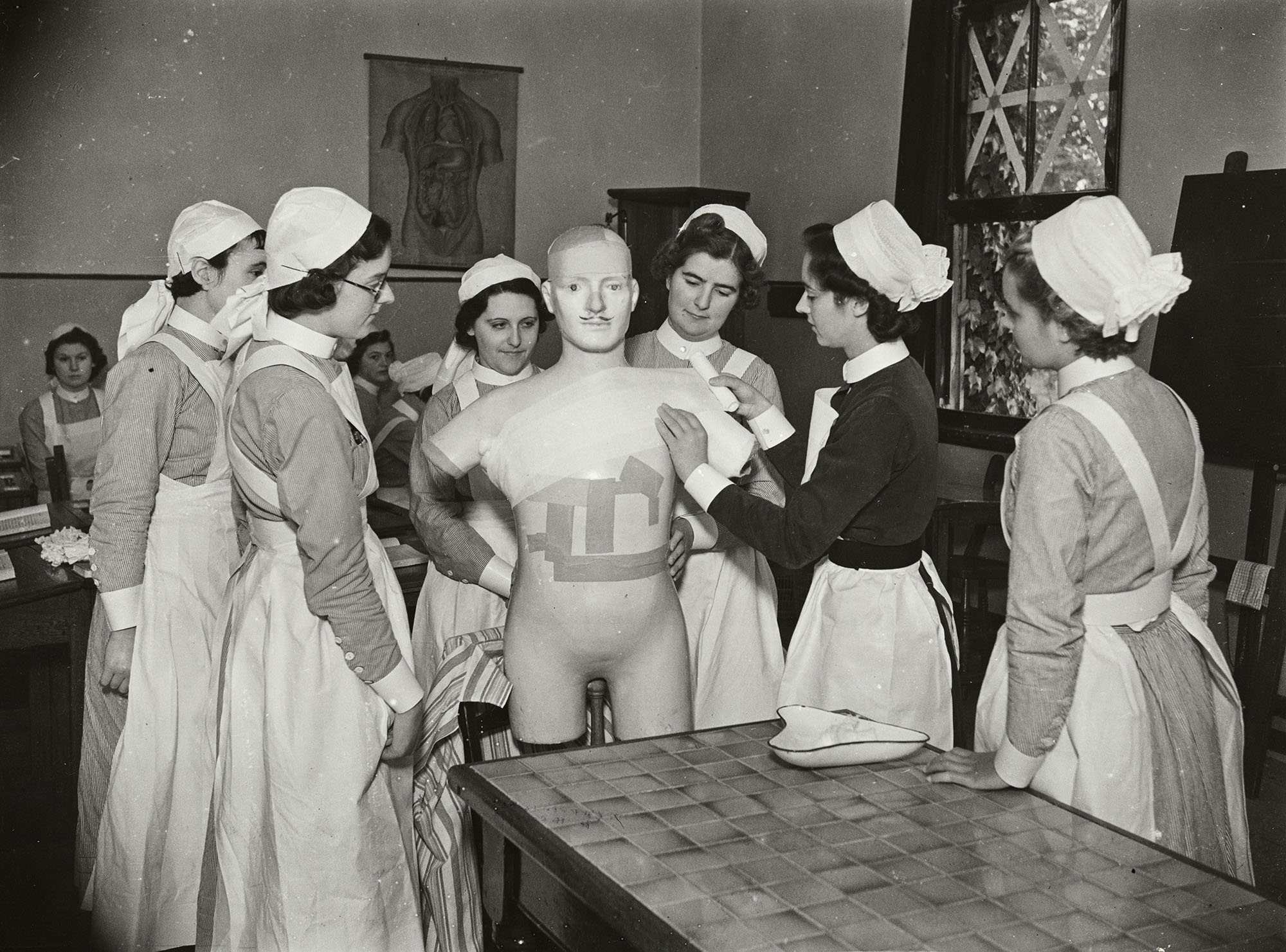Women and Healthcare
These pages are an introduction to some remarkable buildings which illuminate the roles of women in healthcare.
These range from hospitals designed specifically for women to medical schools for women doctors and nurses’ training homes.
Places associated with pioneering female doctors and nurses also feature.
Women doctors and nurses
It is a long-held assumption that women have a special talent for tending the sick, a notion that in the Victorian period led to hospital wards being staffed by untrained working-class women whose caring skills were supposed to be innate.
At the same time, middle and upper-class women were considered too fragile for what could be hard, gruesome and dirty work. Florence Nightingale’s service in the Crimean War and Elizabeth Garrett Anderson’s struggle to become a qualified doctor (eventually taking her medical degree in Paris in 1870 because no British medical school would enrol her) undermined the presumption that genteel women had no place in a hospital.
Meanwhile, the London Hospital was one of the first to offer its nurses formal medical training in a purpose-built school, alongside basic instruction in housekeeping. As its Matron Eva Lückes observed, 'unfortunately, a knowledge of [such duties] does not come by instinct to every woman, as is sometimes imagined'.
By the end of the nineteenth century, nurses were better qualified and better paid; the British Medical Association admitted women to its membership in 1892 (having specifically excluded them in 1878) and there were nearly a thousand female doctors by 1914.
This progress was timely, for Britain was to rely on women medical professionals as the First World War took its heavy toll. Many women, Vera Brittain among them, got their first taste of work as nurses in the Great War; over 350 lost their lives. The statue of Edith Cavell in St Martin’s Place records one remarkable nurse’s sacrifice; the recently-unveiled memorial near the Cenotaph in Whitehall commemorates the contribution of women in both wars.
Women patients
Almshouses for elderly women survive from the eighteenth century – no surprise given that women have long tended to outlive men. As the role of women in healthcare grew, so too did the profession's understanding of the particular health needs of women.
Women's hospitals first appeared in the 1840s and there were twelve by 1871. Elizabeth Garrett Anderson founded the New London Hospital for Women on Euston Road in 1890 which not only catered for women but was staffed by female doctors too.
From the 1870s, general hospitals began to set up gynaecological wards and specialist departments. The NHS introduced universally-available free healthcare in 1948 and since then the treatment of men and women in separate buildings has declined. However, refuges for abused women - which originated in philanthropic endeavours in industrial towns - are, alas, a type of welfare building that still has a role to play in the lives of some.
Unsurprisingly, women have often been the focus of attempts to improve children’s health. As well as lying-in hospitals, and those specifically for women and children, the interwar years saw the Mothercraft Training Society build a new headquarters in Highgate, North London, from where they tutored new mothers on how to look after their babies.
Just as some campaigned for women to be taken seriously in historically male professions, others were challenging the assumption that traditional female roles such as mother or carer came easily to all women.
-
Places Associated With Health Pioneers
Four pioneers of women's healthcare and the buildings connected to them.
-
Buildings For Women As Patients
As the role of women in healthcare grew, so too did the profession's understanding of the health needs of women.
-
Buildings For Training Nurses, Doctors… and Mothers!
A history of four buildings where women were trained to treat and care for patients.





